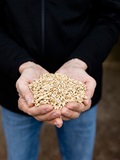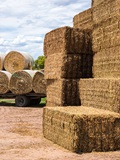South East SA
20 May 2020
| Date | SE 23 | SE 22 | SE 5YA |
|---|---|---|---|
| 06-Jan-23 | 358 | 210 | 226 |
| 13-Jan-23 | 363 | 210 | 231 |
| 20-Jan-23 | 363 | 210 | 226 |
| 27-Jan-23 | 363 | 210 | 231 |
| 03-Feb-23 | 363 | 210 | 230 |
| 10-Feb-23 | 363 | 210 | 228 |
| 17-Feb-23 | 363 | 210 | 228 |
| 24-Feb-23 | 363 | 210 | 228 |
| 03-Mar-23 | 363 | 210 | 228 |
| 10-Mar-23 | 363 | 210 | 227 |
| 17-Mar-23 | 363 | 215 | 229 |
| 24-Mar-23 | 363 | 215 | 229 |
| 31-Mar-23 | 363 | 215 | 232 |
| 07-Apr-23 | 363 | 215 | 232 |
| 14-Apr-23 | 363 | 218 | 233 |
| 21-Apr-23 | 363 | 220 | 232 |
| 28-Apr-23 | 363 | 220 | 237 |
| 05-May-23 | 363 | 220 | 237 |
| 12-May-23 | 363 | 220 | 237 |
| 19-May-23 | 363 | 220 | 237 |
| 26-May-23 | 363 | 220 | 237 |
| 02-Jun-23 | 363 | 220 | 237 |
| 09-Jun-23 | 353 | 230 | 260 |
| 16-Jun-23 | 351 | 240 | 282 |
| 23-Jun-23 | 348 | 240 | 279 |
| 30-Jun-23 | 343 | 240 | 279 |
| 07-Jul-23 | 338 | 240 | 271 |
| 14-Jul-23 | 331 | 243 | 272 |
| 21-Jul-23 | 323 | 245 | 272 |
| 28-Jul-23 | 313 | 245 | 272 |
| 04-Aug-23 | 313 | 245 | 272 |
| 11-Aug-23 | 313 | 245 | 273 |
| 18-Aug-23 | 311 | 253 | 296 |
| 25-Aug-23 | 308 | 260 | 297 |
| 01-Sep-23 | 308 | 260 | 297 |
| 08-Sep-23 | 260 | 297 | |
| 15-Sep-23 | 260 | 297 | |
| 22-Sep-23 | 258 | 295 | |
| 29-Sep-23 | 255 | 292 | |
| 06-Oct-23 | 255 | 292 | |
| 13-Oct-23 | 255 | 258 | |
| 20-Oct-23 | 260 | 258 | |
| 27-Oct-23 | 260 | 257 | |
| 03-Nov-23 | 293 | 264 | |
| 10-Nov-23 | 325 | 270 | |
| 17-Nov-23 | 325 | 265 | |
| 24-Nov-23 | 338 | 269 | |
| 01-Dec-23 | 338 | 271 | |
| 08-Dec-23 | 338 | 264 | |
| 15-Dec-23 | 343 | 265 | |
| 22-Dec-23 | 343 | 265 | |
| 29-Dec-23 | 353 | 271 |
Notes:
Change in price is the change since the last report. Hay quoted is sourced and delivered locally, GST exclusive unless stated otherwise. It should be noted that local prices quoted may not be the cheapest available, sourcing it from another region may be more affordable, and buyers are encouraged to evaluate all options. Prices are indicative to a mid-range shedded product, and based on the best indication of market value at the time of reporting. It should be noted there is a wide variation in quality of hay, prices for a mid-range product will not reflect the weighted average of trade. Prices will naturally vary based on the product quantity and quality, buyer/seller relationship and the size of the trade.The hay report has been commissioned by Dairy Australia to provide an independent and timely assessment of hay markets in each dairy region. This report is created using data provided by the Australian Fodder Industry Association (AFIA). It should be remembered that actual prices may vary for quality or other reasons. Whilst all reasonable steps have been taken to ensure the accuracy of the information contained in this report, Dairy Australia disclaims all liability to the fullest extent permitted by Australian law for any inadvertent errors and for any losses or damages stemming from reliance upon its content. Dairy Australia recommends all persons seek independent advice and, where appropriate, advice from a qualified advisor before making any decisions about changes to business strategy.
Commentary
- Low rainfall across the region this week, with some areas receiving no rain at all and others recording 5 - 10mm of rain on average. Temperatures are also trending lower than expected for this time of year.
- Wheat crops around Naracoorte are showing good growth and yield potential after being sprayed for rust. More clear and warm days are needed, however good soil moisture and rainfall are providing an optimistic outlook for many growers.
- With lower hay production forecast for later this year, it is being suggested that livestock producers should lock in contracts with dedicated hay and silage producers.
- After a period of active trade, hay demand has dropped as good quality hay is sold out across the region. A lot of the remaining hay is already contracted for sale, so shortages are expected until the new season stock becomes available. Those still looking for supply will need to factor in additional freight charges.
- Slight change to pricing this week.
- Cereal hay: -$5 ($240 to $270/t). Prices decrease this week.
- Lucerne hay: +/-0 ($340 to $400/t). Prices remain steady this week.
- Straw: +/-0 ($120 to $140/t). Prices remain steady this week.
- Pasture hay: +/-0 ($200 to $230/t). Prices remain steady this week.
- Please note: Unless stated otherwise, prices are per tonne, sourced and delivered locally. The price range indicated is for feeds of varying quality with the price range generally indicative of quality of feed. We recommend feed testing and viewing of fodder before purchase to be sure of the quality of feed.

